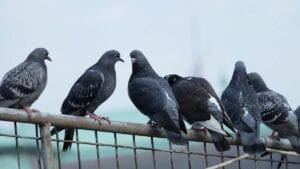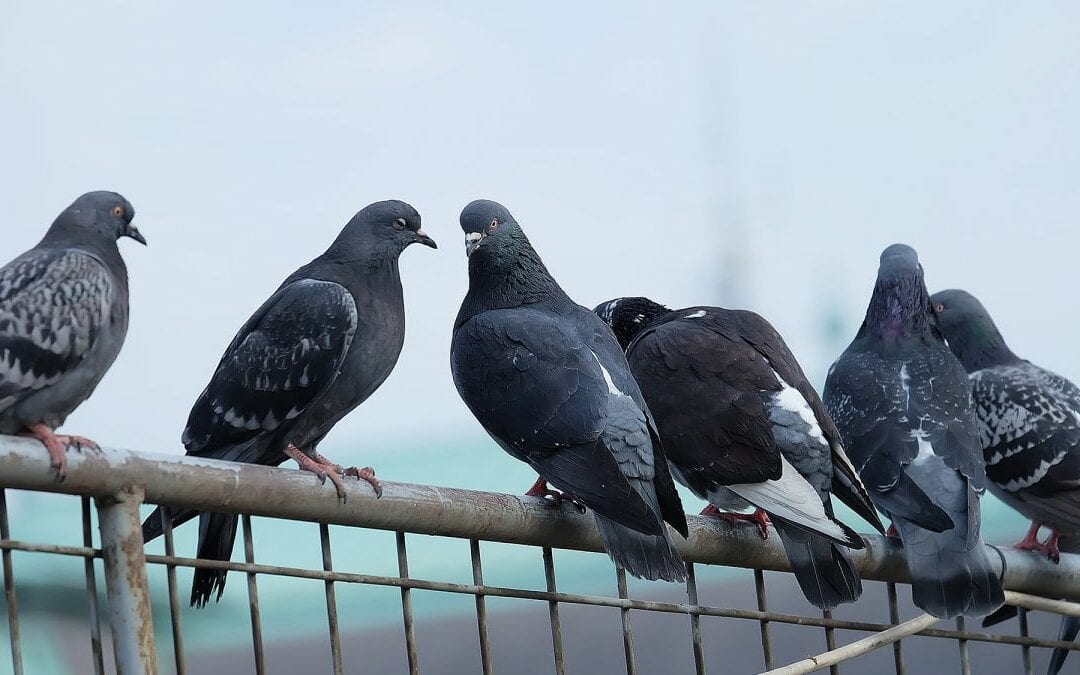Scientists have thought for a decade that iron-bearing structures in the homing pigeon’s beak help the bird find its location by “reading” Earth’s magnetic field. Now, it turns out that this iron occupies cells that battle infection, rather than nerve cells.

The new results leave a chasm in our understanding of bird navigation, says Charles Walcott, an expert on the subject at Cornell University, who was not involved in the study. “It’s astonishing that we have what seems like a terribly simple-minded problem. Take a homing pigeon any direction, and after circling a couple of times, it heads for home … and we don’t understand how these animals do this?”
Study leader David Keays, of the Institute for Molecular Pathology in Vienna, did not set out to debunk a beautiful theory, but rather to explore the nerve cells in the beak that supposedly register magnetism. “My background is in molecular biology and genetics, and I thought there must be some incredible biology involved. I wanted to get a handle on the molecules and create an artificial receptor.”
Because the “magnetic neurons” in the beak contained iron, Keays applied a blue stain that gloms onto iron. Christoph Treiber and Marion Salzer generated one-quarter million slices for microscope slides, each one-hundredth of a millimeter thick.
(Makes us dizzy … Didn’t they outlaw slavery?)
A fly in the ointment!
Although the magnetic neurons were said to number just six, iron-rich cells showed up all over the beak. One beak had about 108,000 blue-stained cells while another had just 200, Keays says. “This did not make sense. If these were magnetoreceptors, we would expect a similar number in birds of the same age and sex.”
When the scientists treated the samples with stains that attach to neurons, there was almost no overlap with the iron-bearing areas.
As questions accumulated, the researchers got a lucky break. One bird’s infected beak attracted blue cells that resembled macrophages, immune cells that fight infection (and also process iron). “You could see the cells’ tentacles engulfing other cells,” Keays says.
Stains that attach to immune cells overlapped heavily with the iron stain, Keays says; further evidence that the iron was inside macrophages, not neurons.
The study is “quite interesting and convincing,” says Walcott, and it explains why scientists have found no connection between the iron crystals and the nervous system. “If this is going to be seen as a sense organ, I think the two ought to be connected.”
Paradigm paranoia
Although the new study overthrows the accepted explanation for the pigeon’s magnetic mastery, Walcott says magnetism isn’t the whole story in navigation; birds also use vision, memory and smell.
Looking at the sun can help the bird figure out direction, but magnetic methods are needed to find a location on the globe.
Confusingly, birds seem to have a mechanism in the eye that detects Earth’s magnetic field. But because this works only when the sun is shining, it’s unlikely to explain nighttime navigation.
Keays says attitudes have changed since he “released a cat among the pigeons” at a conference a year ago. “Half of the audience wanted to hug me, they had been very skeptical, but the other half wanted to kill me.”
Since then, however, “We were able to persuade some big players in the field that the original reports were wrong. I think the great thing about science is that it is a self-correcting enterprise. If we get it wrong, somebody is going to come along and work out what the truth is.”
At this point, though, mystery rules. “It’s absolutely clear that birds, pigeons, can detect magnetic fields,” Keays says, “but the way they do that is the mystery.”
Pigeon Patrol Products & Services is the leading manufacturer and distributor of bird deterrent (control) products in Canada. Pigeon Patrol products have solved pest bird problems in industrial, commercial, and residential settings since 2000, by using safe and humane bird deterrents with only bird and animal friendly solutions. At Pigeon Patrol, we manufacture and offer a variety of bird deterrents, ranging from Ultra-flex Bird Spikes with UV protection, Bird Netting, 4-S Bird Gel and the best Ultrasonic and audible sound devices on the market today.
Voted Best Canadian wholesaler for Bird Deterrent products ten years in a row.
Contact us at 1- 877– 4– NO-BIRD, (604) 585-9279 or visit our website at www.pigeonpatrol.ca
Pigeon/Pigeon Patrol / Pigeons Roosting / Vancouver Pigeon Control /Bird Spikes / Bird Control / Bird Deterrent / Pigeon Deterrent? Surrey Pigeon Control / Pest /Seagull deterrent / Vancouver Pigeon Blog / Birds Inside Home / Pigeons in the cities / Ice Pigeons/ What to do about pigeons/ sparrows , Damage by Sparrows, How To Keep Raccoons Away, Why Are Raccoons Considered Pests/ De-fence / Pigeon Nesting/ Bird Droppings / Pigeon Dropping/ woodpecker control/ Professional Bird Control Company/ Keep The Birds Away/ Birds/rats/ seagull/pigeon/woodpecker/ dove/sparrow/pidgeon control/pidgeon problem/ pidgeon control/flying rats/ pigeon Problems/ bird netting/bird gel/bird spray/bird nails/ bird guard

